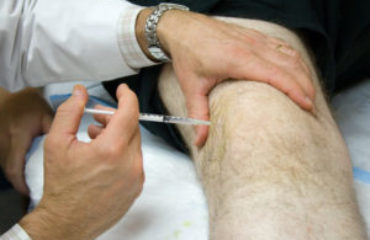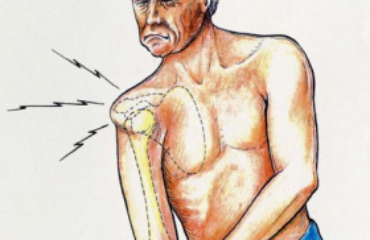Osteonecrosis is a condition that causes severe disability and pain. This condition occurs from overuse of corticosteroid agents or from drinking too much alcohol. Osteonecrosis can occur in any bone of the human body, but the bones most often affected are the hips, knees, and shoulders.
Osteonecrosis, often called aseptic necrosis or avascular necrosis, is the death of bone cells. The cells die due to decreased blood flow. Bone cell death leads to collapse of areas of the bone, which in turn, leads to osteoarthritis (called degenerative arthritis) of nearby joints. The bones and bone marrow of the body are made of health cells that require blood to stay healthy. When blood is restricted to the cells, the cells die, leading to osteonecrosis.
Incidence of Osteonecrosis
Osteonecrosis affects around 20,000 people each year in the United States. The condition can affect any age group, but most patients are between age 20 and 50 years old. A diagnosis of osteonecrosis does not alter life expectancy.
Cause of Osteonecrosis
Bone cells do not just die normally. There is usually a causative agent that leads to cell death. The most common causes for osteonecrosis are:
- Severe injury or trauma – Leads to disruption of the bone’s blood supply.
- Use of corticosteroid medications – When used in high doses for prolonged periods of time, these drugs cause bone cell death. Examples are methylprednisolone, cortisone, and prednisone.
- Excessive alcohol consumption
- Systemic lupus erythematosus
- Decompression disease – Occurs with scuba diving.
- Blood disorders – Includes antiphospholipid antibody syndrome, sickle cell anemia, and lupus anticoagulant.
- HIV infection
- Radiation therapy
Diagnosis of Osteonecrosis
A doctor will suspect osteonecrosis when a patient with risk factors reports feeling bone pain localized in a small area. Many patients with osteonecrosis report hip and groin pain. The pain associated with knee or hip osteonecrosis is often worse with walking or weight-bearing. After taking a detailed medical history, the doctor will conduct a physical examination. X-rays are taken of the painful region. Imaging scans used to make the diagnosis include bone scans and magnetic resonance imaging (MRI) tests.
Osteonecrosis Treatment
At present, there is no cure for osteonecrosis, but treatment does help control symptoms and prevent bone collapse. Options are:
- Early treatment – Limiting weight-bearing on affected areas and taking pain medications are two conservative treatments for osteonecrosis. Patients with hip or knee osteonecrosis may need surgical procedures to prevent bone collapse and relieve pain.
- Core decompression surgery – When osteonecrosis progresses, and pain worsens, the patient may benefit from a core decompression procedure. This involves removal of a piece of bone from the affected region. This is done to improve blood flow to the other bone regions.
- Osteotomy – The surgeon may also perform an osteotomy. This involves removal of the dead bone and repositioning of the remaining bone to support the weight-bearing joint.
- Joint replacement – When the bone of the joint collapses, a total joint replacement may be needed.
- Bone grafting – This procedure involves taking a small piece of bone from the healthy leg and transplanting it to the place where the necrosis exists. Bone grafting allows for improved blood flow to the surrounding bone tissue.
- Medications – While there are no established guidelines for preventive or curative medications, certain pharmaceuticals are used in osteonecrosis. Lipid lowering agents may prevent cell death. In addition, there is increasing evidence that anticoagulants may help. Bisphosphonates are used to treat low bone mass, and one study found that alendronate improved symptoms in patients with hip osteonecrosis. Finally, analgesics are used to control bone-related pain.
Resources
National Osteonecrosis Foundation (2014). Osteonecrosis. Retrieved from: http://nonf.org/nofbrochure/nonf-brochure.htm



